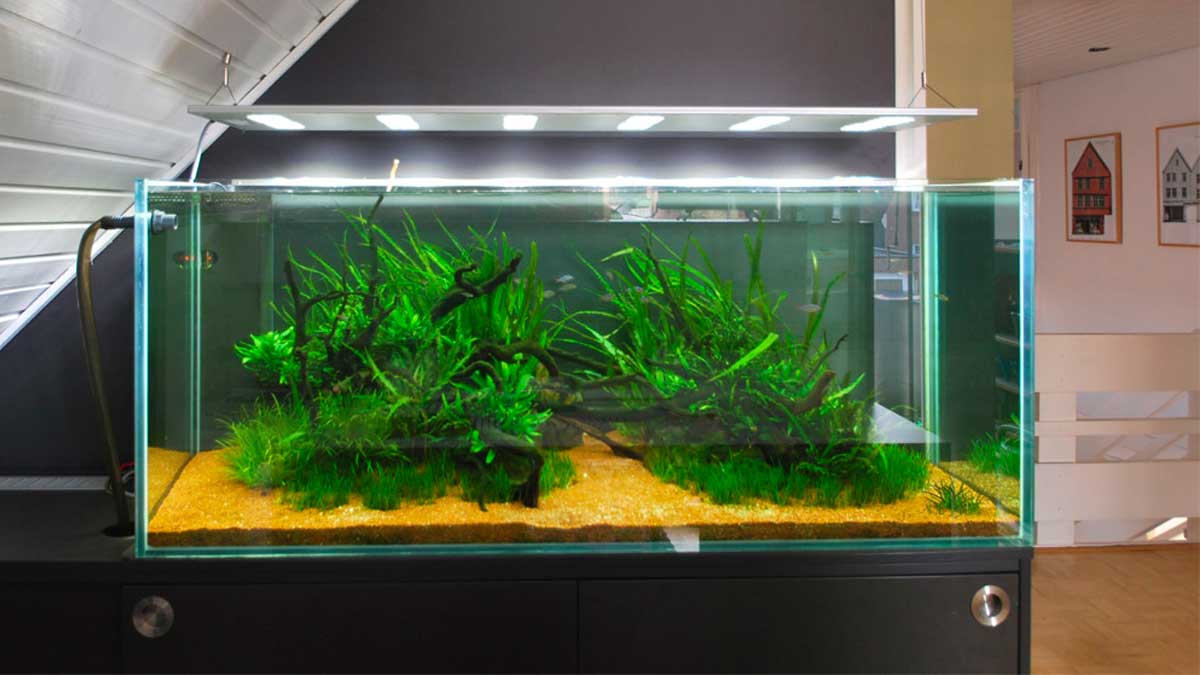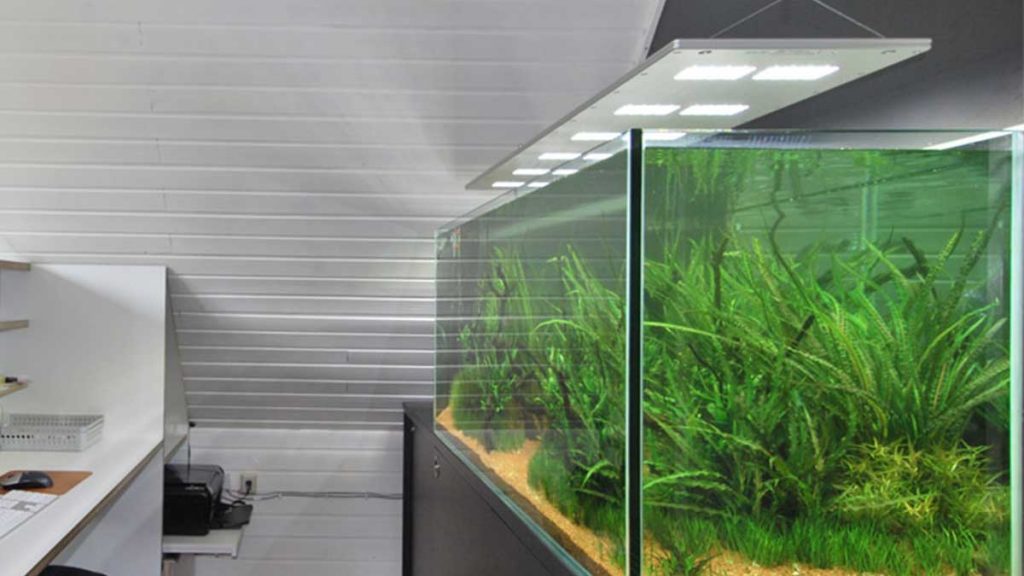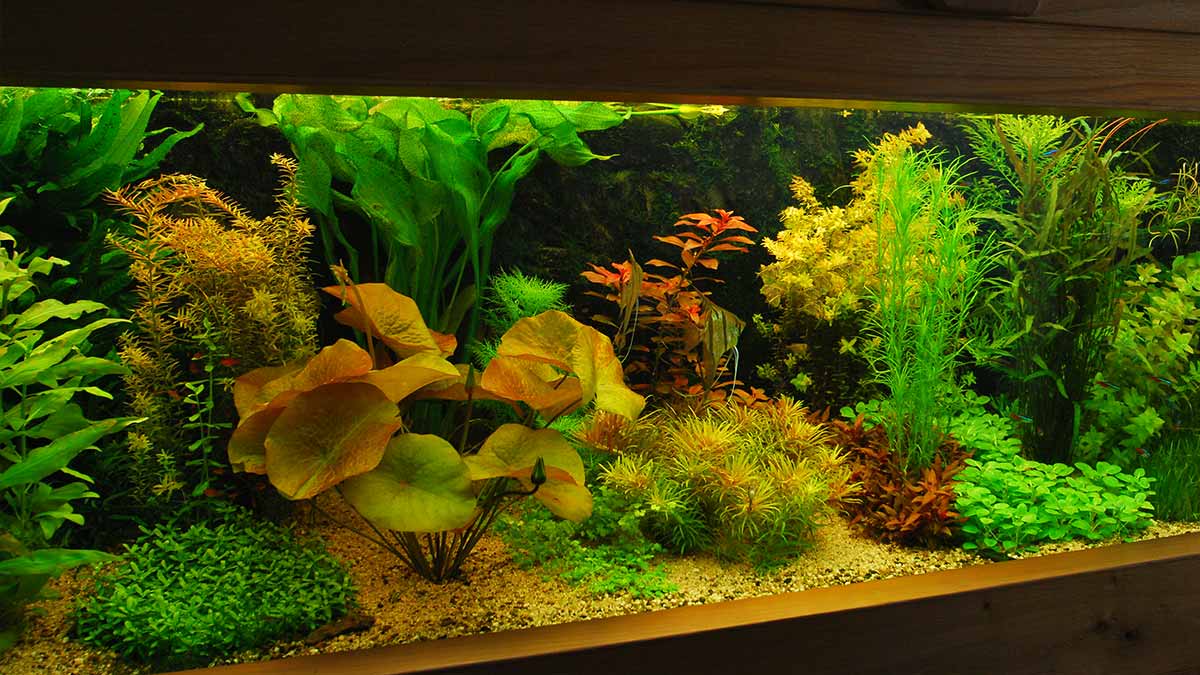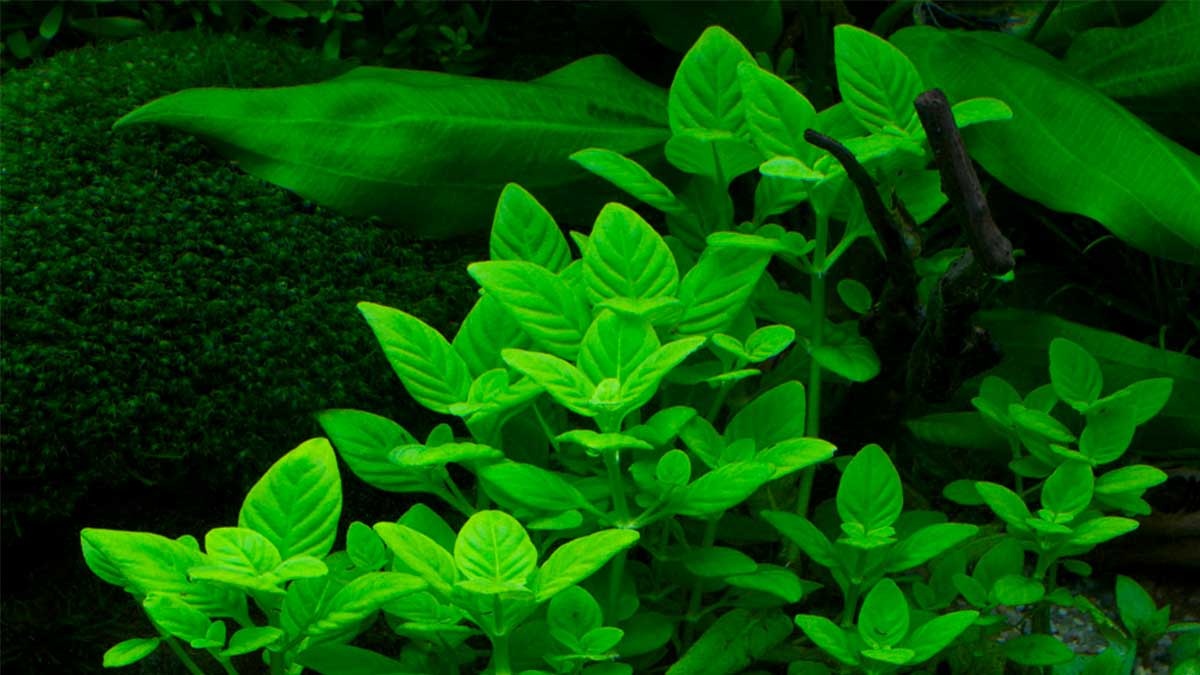During a presentation I learned about using LEDs as a light source for planted tanks. Interestingly, LEDs are already being used in some greenhouse environments and experiments with terrestrial plants have apparently led to promising results. The spectrum of light emitted by LEDs is more evenly distributed than that of fluorescent T5 lights. This is said to improve colour fidelity in photos as well as suiting plant growth.
New High-Power LEDs are quite suitable for planted tanks. First results after 4 months.
Further benefits include the long life, no necessity for reflectors as well as a caustic effect, which makes the water shimmer with light. This effect could only be achieved with HQI lamps before. Obviously, LEDs can also be dimmed. So you can reduce the light intensity during the day for several hours without switching the lights off completely.
Which Brand?
There were several samples on show during the presentation, and my interest was captured by a product from aquaLEDs. Its ultra-flat design, passive cooling and built-to-order concept were the main benefits of this system. As my third aquarium was to be placed in my study in an attic space with a sloping ceiling, this LED lighting system was the perfect solution for me. Since I do Skype conferences regularly, the aquarium was intended to provide a suitable backdrop.
LEDs have a long life span but need cool operating temperatures to last the promised 50.000 hours. After that, as much as 90% of the light yield can still be expected. So, even then, the modules can still be used. To obtain the necessary cooling inside the housing, some manufacturers incorporate a cooling fan. Since I don’t listen to the radio while I work, nor do I need any other form of acoustics, I was glad that the modules I had ordered were passively cooled by virtue of the large area of the aluminium casing.
Easy Montage
The lighting unit arrived about 6 weeks after I had placed the order. Since I wanted to hook everything up to a GHL computer, I had already purchased and installed the necessary dimming circuit board from GHL. So, all that I needed to do was to hang the LED unit under the ceiling. The system that comes with the aquaLEDs is really clever. Thanks to the included wire cable fittings, even a mediocre DIY’er like me can fix everything up in a matter of minutes. After I had hooked up the dimming chip, everything actually worked outright.
After I had planted up the tank I started to experiment with the lighting regime. I have come to like a lighting reduction for three hours during the day. Not only does it not harm the plants but it also reduces energy consumption. With 1500 litres in all, this is something to consider. I noticed that the LEDs could not be dimmed down quite as low as the T5s. While the latter could be reduced to as little as 7%, the LEDs need at least 11% to stay on. Below that, some of the units tended to switch off completely.
Speaking of which: Once the lights have been switched off for the night, a couple of blue “Moonlights” take over. This is a nice detail of the AquaLEDs brand. It allows for viewing your aquatic habitat at any time without messing up any bio-rhythms.
Plant Growth
The Aquarium underneath these LEDs is a Nature Aquarium planted with undemanding plants such as Crypts (C. balansae, C. spiralis), Blyxa japonica, Microsorium pteropus varieties and Lilaeopsis mauritiana. Three days ago, I added some Rotalas (R. mexicana and Rotala spec. “Pearl”) as well as an as yet unidentified Ludwigia species. Except for the latter three species, all other plants, while not particularly light-demanding, are still growing very well and have developed a healthy and dense population. Even the slow-growing Lilaeopsis has already formed a nice little carpet and seems to thrive under the LED lights. A single Littorella uniflora has quickly formed a little stand in the front right corner. This plant did not grow well in my other tank. The success with the Littorella induced me to introduce the Rotalas. In the beginning, I wasn’t sure if the light would be strong enough but it seems to be the case. Maybe an additional module can be added for strong-light aquaria. However, the passive cooling may be affected adversely by increasing the density of the modules but the manufacturer will know what to do I’m sure.
Conclusion
Although I have only had the LED lights for four months and haven’t tested with demanding plants, I have found this type of lighting exactly right for this tank. In a closed or built-in tank, such as my Dutch style tanks, it is debatable if cheaper means may perhaps be more appropriate for their illumination. With my rimless Nature Aquarium however, I would not choose any other lighting than these LEDs.
-To Be Continued-




